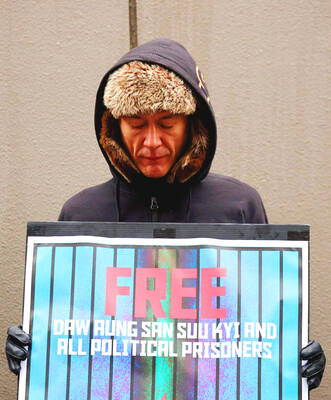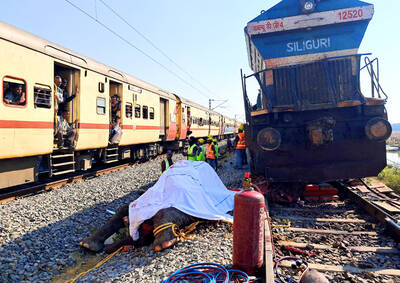Global warming will leave the Arctic Ocean ice-free during the summer within 20 years, raising sea levels and harming wildlife such as seals and polar bears, a leading British polar scientist said yesterday.
Peter Wadhams, professor of ocean physics at the University of Cambridge, said much of the melting will take place within a decade, although the winter ice will stay for hundreds of years.
The changes will mean the top of the Earth will appear blue rather than white when photographed from space and ships will have a new route north of Russia.
Scientists say evidence of melting Arctic ice is one of the clearest signs of global warming and it should send a warning to world leaders meeting in Copenhagen in December for UN talks on a new climate treaty.
“The data supports the new consensus view — based on seasonal variation of ice extent and thickness, changes in temperatures, winds and especially ice composition — that the Arctic will be ice-free in summer within about 20 years,” Wadhams said in a statement. “Much of the decrease will be happening within 10 years.”
Wadhams, one of the world’s leading experts on sea ice cover in the North Pole region, compared ice thickness measurements taken by a Royal Navy submarine in 2007 with evidence gathered by the British explorer Pen Hadow earlier this year.
Hadow and his team on the Catlin Arctic Survey drilled 1,500 holes to gather evidence during a 450km walk across the Arctic. They found the average thickness of ice-floes was 1.8m, a depth considered too thin to survive the summer’s ice melt.
Sometimes referred to as the Earth’s air-conditioner, the Arctic Sea plays a vital role in the world’s climate. As Arctic ice melts in summer, it exposes the darker-colored ocean water, which absorbs sunlight instead of reflecting it, accelerating the effect of global warming.
Martin Sommerkorn, from the environmental charity WWF’s Arctic program, which worked on the survey, said the predicted loss of ice could have wide-reaching affects around the world.
“The Arctic Sea ice holds a central position in our Earth’s climate system. Take it out of the equation and we are left with a dramatically warmer world,” he said.

The Burmese junta has said that detained former leader Aung San Suu Kyi is “in good health,” a day after her son said he has received little information about the 80-year-old’s condition and fears she could die without him knowing. In an interview in Tokyo earlier this week, Kim Aris said he had not heard from his mother in years and believes she is being held incommunicado in the capital, Naypyidaw. Aung San Suu Kyi, a Nobel Peace Prize laureate, was detained after a 2021 military coup that ousted her elected civilian government and sparked a civil war. She is serving a

REVENGE: Trump said he had the support of the Syrian government for the strikes, which took place in response to an Islamic State attack on US soldiers last week The US launched large-scale airstrikes on more than 70 targets across Syria, the Pentagon said on Friday, fulfilling US President Donald Trump’s vow to strike back after the killing of two US soldiers. “This is not the beginning of a war — it is a declaration of vengeance,” US Secretary of Defense Pete Hegseth wrote on social media. “Today, we hunted and we killed our enemies. Lots of them. And we will continue.” The US Central Command said that fighter jets, attack helicopters and artillery targeted ISIS infrastructure and weapon sites. “All terrorists who are evil enough to attack Americans are hereby warned

Seven wild Asiatic elephants were killed and a calf was injured when a high-speed passenger train collided with a herd crossing the tracks in India’s northeastern state of Assam early yesterday, local authorities said. The train driver spotted the herd of about 100 elephants and used the emergency brakes, but the train still hit some of the animals, Indian Railways spokesman Kapinjal Kishore Sharma told reporters. Five train coaches and the engine derailed following the impact, but there were no human casualties, Sharma said. Veterinarians carried out autopsies on the dead elephants, which were to be buried later in the day. The accident site

‘EAST SHIELD’: State-run Belma said it would produce up to 6 million mines to lay along Poland’s 800km eastern border, and sell excess to nations bordering Russia and Belarus Poland has decided to start producing anti-personnel mines for the first time since the Cold War, and plans to deploy them along its eastern border and might export them to Ukraine, the deputy defense minister said. Joining a broader regional shift that has seen almost all European countries bordering Russia, with the exception of Norway, announce plans to quit the global treaty banning such weapons, Poland wants to use anti-personnel mines to beef up its borders with Belarus and Russia. “We are interested in large quantities as soon as possible,” Deputy Minister of National Defense Pawel Zalewski said. The mines would be part